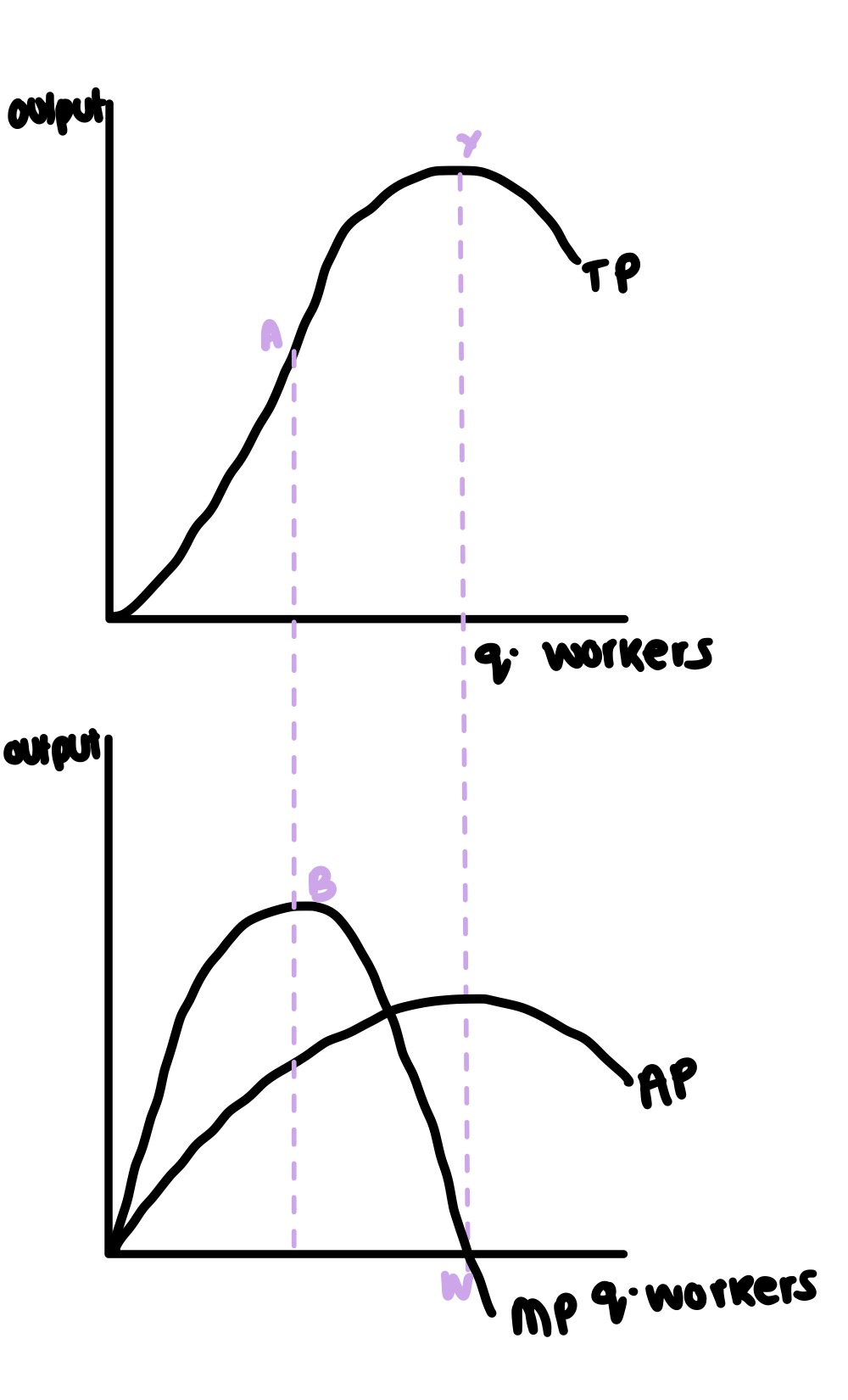economies and diseconomies of scale and returns to scale
1/14
There's no tags or description
Looks like no tags are added yet.
Name | Mastery | Learn | Test | Matching | Spaced |
|---|
No study sessions yet.
15 Terms
economies of scale
falling LRAC as output increases
costs still rise however output is rising at a faster rate
diseconomies of scale
rising LRAC as output increases
internal economies and diseconomies of scale
changes in LRAC of production from changes in the size or scale of a firm or plant
external economies and diseconomies of scale
changes LRAC of production resulting form the growth of the market or industry
TCs are reduced as output increases leading to falling LRAC
examples of internal diseconomies of scale (3)
managerial
administration of firms becomes more difficult as it grows
may lead to increase in cost of production if tasks delegated to workers who are not trained
workers more likely to ‘slack off‘ due to managers not being able to pay as much attention to each individual worker
motivational
overspecialisation may lead to de-skilling
workers may feel less valued as they are easily replaceable therefore there is less of an incentive to use personal initiative
communication failure
takes time and effort for messages to spread from the top of the organisation to the bottom - changes in operation
or takes time for messages from the bottom to be reached at the top - suggestions from floor workers are complaints regarding work conditions
impacts on productivity
examples of internal economies of scale (6)
risk-bearing
some investment is very risky so only large firms will take the risk
spread risk over larger range of output
financial
able to borrow larger amounts from banks and other financial lenders and likely at better rates than small firms
banks believe they are lower risk so more willing to do so
managerial
benefit from effective division of labour within management and regular work force
employ specialist managers as a firm gets larger
they can monitor the productivity of the workforce and boost it
technical
bringing in specialist machinery which can boost productivity
employing workers which are able to specialise as firm gets larger increases productivity
generated through changes to the productive process through investment in R&D creating dynamic efficiency
creates capital indivisibilities creating high barriers to entry
marketing
bulk buy advertising
negotiate unit rates of advertising
spread advertising costs over larger range of products
purchasing
able to buy raw material in bulk
able to negotiate unit discounts
spread costs over a wider range of output
minimum efficient scale
the lowest level of output required to fully exploit economies of scale
this means that after this quantity costs cannot get any lower
explain why external economies of scale occur (3)
improved transport infrastructure
reduces costs when transporting goods and cheaper to access raw materials
supportive legislation
if a firm grows and becomes vital to regional area it may gain some political power and even gain favours in the form of subsidies
cluster effect
similar businesses located in the same area creates pool of skilled labour
easy access to supply of labour which reduces recruitment costs
explain what increasing returns to scale is
when output increases at a faster rate than the increase in the scales for all factors of production employed
this means ACs are decreasing
due to experiencing economies of scale
constant returns to scale
when the scale of all factors of production employed increases at the same rate as output
this means that ACs are constant
explain what decreasing returns to scale is
when the scale of all factors of production employed increases, the output increases at a slower rate
this means ACs are increasing
due to experiencing diseconomies of scale
returns to scale
in the long run, the rate by which output changes if the scale of factors of production employed is changed
describe the difference between the long run and short run
in the short run at least one factor of production is fixed and can’t be varied
this means that the only way a firm can produce more in the short run is by adding more variable factors of production to the fixed factor
usually assume that capital and land are fixed in the short run and labour is variable
in the long run all factors of production can be varied thus the scale of all factors of production can be changed
explain law of diminishing returns
short run law
states that as variable factors of production is added to a fixed factor of production, marginal/ total product will initially rise then fall
in economic short run, the factors of production are being underutilised so increasing labour increases productivity as specialisation and division of labour is able to take place
labour productivity then decreases as fixed factors of production becomes a constrain on production so workers get in the way of one another due to limited work space
draw and annotate the diagram to show the law of diminishing returns
law begins to set in at point A as although total product is increasing it is no doing so at a diminishing rate
after point Y TP begins to fall as MP is now 0 which can be seen at point W
this means that beyond this point any addition workers will contribute negatively to MP thus diminishing marginal returns
